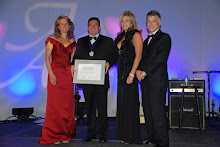Here is your comprehensive oral care that combines art and science to optimally improve dental health, aesthetics and function. Any dental treatment that is performed here in Dr. Hawaray’s California smile design dental group is to improve the appearance of your smile. We focus on improving appearance and facial self-image by correcting the alignment, shape, and color of teeth. Dr. Hawary offers cosmetic options which can improve the appearance of stained, chipped, and misshapen teeth, and correct uneven gums and replace old fillings with nearly invisible filling materials.
Teeth Whitening
The most popular option in cosmetic dentistry is tooth bleaching, which involves whitening systems that brighten stained, discolored, or dull-looking teeth.
Commonly referred to as “bleaching” teeth whitening is a process that will restore teeth to their whitest shade. It brightens stained, discolored or dull teeth.
Here in Dr. Hawaray’s California smile design dental group we offer several methods of teeth whitening, including the Zoom! Chair side Whitening System. It is an in-office whitening system that is safe, effective and fast. In just one hour, your teeth will be dramatically whiter. It is the whitening system ideal for anyone looking for immediate results. It begins with a short preparation to isolate your lips and gums. Then the whitening gel is applied which is activated by a specially designed light.
Porcelain veneers
Veneers are the next most popular cosmetic dentistry option. Used to correct chipped, cracked or worn teeth, veneers are ultra thin tooth coverings, sometimes made of porcelain or composite materials. Here at Dr. Hawary’s California Smile Design Dental Group, we offer our patients a thorough consultation in order to provide you with the opportunity to voice any concerns you may have about the treatment. It also gives Dr Hawary the opportunity to assess your teeth and advise you of the best possible treatment.
Dental implants
Dr Hawary's Implant Cases are published in The Dental Implant Blog of the International Congress of Oral Implantologists and this portrays that Dr. Hawary is the best. Dental implants are artificial tooth replacements used to counter tooth loss. Crowns, dental bridges, and dental implants can be used to replace missing teeth or correct bite dysfunction. Today's newer technology includes porcelain and ceramic tooth replacements that look real and blend with existing teeth.
Invisalign
Dr. Hawary is a premier provider of Invisalign, he has achieved an exceptional level of Invasalign case experience. Having a confident smile can change everything. And Invisalign makes the decision easy, because you can get a stunning smile without most people even noticing you're going through treatment. If you're ready for a smile that transforms your appearance, Invisalign is your answer. Although there are many choices out there, no other works as effortlessly as the Invisalign system.
Inlays/Onlays
Many patients have dental restorations that outlived their intended life. Cracked teeth and leaking worn out fillings compromise the health of one’s mouth. By replacing old fillings and cracked tooth structure with inlays or onlays, we are able to achieve a conservative restoration, saving all the healthy tooth structure that remains. A strong piece of porcelain is fabricated and bonded onto the tooth, for a natural looking restoration that strengthen the tooth unlike silver, mercury fillings which actually weaken a tooth and frequently causes teeth to fracture
Diagnosis
The diagnosis of an aesthetic problem involves looking at the entire face; the color of the eyes, skin, and lips often influence the appearance of teeth. The face evaluation is usually divided into imaginary thirds: the first section goes from the hairline to eyebrows, the second from eyebrows to the base of the nose, and the third from the base of the nose to the lower border of chin.
Treatment
Minor corrections in shape and positions can be done with direct resin bonding and ceramic veneers. If the problem is related to position and is considered to be moderate to severe, it is possible to correct it through the placement of veneers, full crowns, or by orthodontic treatment.


